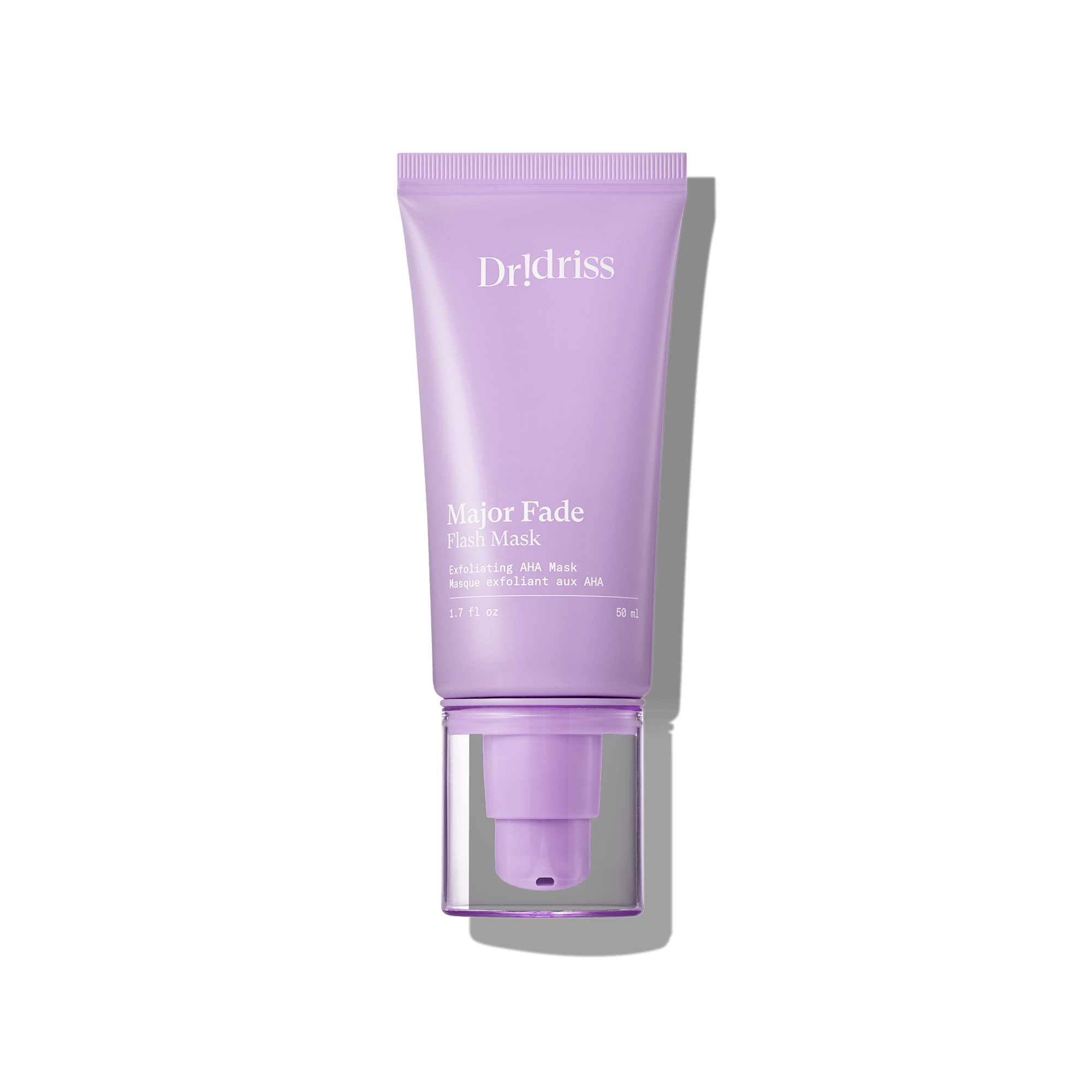Understanding Hyaluronic Acid and Finding Alternatives
Good day, skincare enthusiasts! Prepare your notebooks and pens because we're about to dive deep into the world of hyaluronic acid. Yes, it's been a couple of years since we last tackled this topic. It's high time we revisit the subject of hyaluronic acid. This ingredient and I have a bit of a history. As a popular humectant in the beauty industry, hyaluronic acid is known for its ability to hold onto water, keeping the skin moist and plump - a feature desired by many. But why exactly is hyaluronic acid the most prominent humectant in the field? The answer lies in the billions of dollars invested in it.
Hyaluronic Acid: The Benefits, Risks, and Alternatives
Over time, I have observed how hyaluronic acid has been portrayed as a miraculous, universal solution by marketers. This representation is far removed from reality. I don't believe brands are intentionally misleading; they are simply capitalizing on a trend in the beauty industry. Brands heavily invest in marketing and education in the beauty industry. With consumers' familiarity and trust in hyaluronic acid, it's an easier sell for brands. That's why influencers like me are often approached with lucrative offers to promote these products - we've established trust with consumers, and the educational groundwork is already in place. In spite of the lucrative opportunities, I have consciously decided to reject sponsorships related to hyaluronic acid. I value my peace of mind above monetary gains.
You might be curious about my aversion towards hyaluronic acid but this is not baseless skepticism. Many hail hyaluronic acid as the preeminent humectant, but alternatives like glycerin may prove to be superior. Popular opinion touts hyaluronic acid as an exceptional humectant, but I respectfully disagree. Some studies using corneometry to compare humectants, albeit not the most credible, reveal hyaluronic acid's lackluster performance in water retention. Even with study limitations, other humectants consistently outshone hyaluronic acid.
Naturally occurring in our bodies, hyaluronic acid hydrates but it does more than just that. It's found in our skin, eyes, joints, and cartilage in high molecular weight forms. It helps retain skin moisture, ensure joint mobility, and maintain eyesight health. High molecular weight hyaluronic acid degrades into low molecular weight hyaluronic acid when we suffer injuries. Beauty industry often advertises their products containing this low molecular weight variant.
Within our bodies, low molecular hyaluronic acid attracts inflammatory cells to injuries, aiding the healing process by inducing inflammation and drawing blood vessels to the site. It combats bacterial infections, pathogens, and other harmful elements while promoting skin regeneration. However, this inflammation could be detrimental if your skin is already balanced. Excessive quantities, even of elements like hyaluronic acid, are not beneficial, which contradicts the beauty industry narrative endorsing low molecular weight hyaluronic acid, particularly those less than 500 kilodaltons, as being supreme.
Hyaluronic acid less than 500 kDAs easily penetrates the skin, offering optimal benefits. It helps maintain moisture, leaving your skin appearing plump and youthful over time. However, it's worth mentioning that low molecular weight hyaluronic acid could induce inflammation when topically applied and absorbed under the skin. This inflammation could result in redness, unwanted blemishes, or potentially cause breakouts. While we can't always state that correlation implies causation, I have personally experienced this phenomenon. Also, I've observed similar effects on numerous friends, especially when they transitioned to skincare routines with minimal hyaluronic acid.
Critics who label me a detractor of hyaluronic acid point out that I incorporate it into my own routine, accusing me of hypocrisy. To clarify, the hyaluronic acid I use is injectable, which differs fundamentally from the topical variant due to its molecular weight. Injectable hyaluronic acid, which is delivered under the skin, has a molecular weight in the millions of Daltons, whereas topical hyaluronic acid contains less than 500 kDAs.
One of my concerns with hyaluronic acid is its potential to disturb the structural integrity of the keratin proteins on the skin surface and the lipid barrier. This disturbance could increase your skin's permeability, possibly leading to dehydration. More research is needed on this aspect, particularly considering the variations in humidity. In a dry environment, hyaluronic acid may not offer benefits, even when combined with the most robust occlusive. However, in a more humid environment, the results could be pleasing. The effectiveness of hyaluronic acid also largely depends on not just its application but also on the geographical location and climatic conditions.
The environment in which we apply skincare products is a factor that demands consideration. I've noticed that during winter, when the air is dry and the heating is on, certain products cease to be as effective, a sentiment echoed by many of my friends.
Numerous research studies, including one published in the esteemed Biomaterials journal in 2017, have yielded fascinating discoveries. It was found that Hyaluronic Acid (HA) of low molecular weight stimulated the generation of pro-inflammatory cytokines such as TNF Alpha and IL-12 within macrophages, a type of immune cell crucial to inflammation and the body's initial response to injuries.
Furthermore, the study determined that low molecular weight HA boosted the expression of genes involved in inflammation. We've received numerous anecdotal accounts of improvement in skin conditions upon eliminating HA from skincare regimens. Although we can't confirm causation from these correlations, the volume of such instances necessitates consideration.
If your skincare routine is working for you, carry on. However, if you notice inflammation, dryness, acne, or redness, it may be beneficial to exclude HA and observe any changes. To recognize HA in your skincare products, look for 'HA', which stands for Hyaluronic Acid, 'sodium hyaluronate', 'hyaluronan', 'hyaluronate', and 'hylan'.
To sum up, HA isn't the premier humectant available and it may trigger the skin's inflammatory response. It's therefore worth noting that a dedicated Hyaluronic Acid serum isn't a necessity. Additionally, it's uncertain whether HA may dry out your skin, a factor heavily influenced by your environment and subsequent skincare choices. Now, let's review some products that can simplify your skincare journey.
Product Breakdown: Hyaluronic Acid-Free Recommendations
Dr. Idriss’s moisturizer, Hyper Serum, and Flash Mask are all glycerin-based products, completely devoid of any HA. They have wonderfully enhanced my skincare routine, delivering plump, dewy, and radiant skin, particularly during arid winter months.
Let's rank some hydrating serums from lightest to heaviest. Starting with Cocokind, a $22 barrier serum. I'm not a fan of the dropper packaging common to these serums - I prefer a click pen format that prevents air exchange. Next is Byoma, a slightly more affordable option at $17, with fewer ceramides and the inclusion of squalane. It's impressively lightweight, but will it suffice on its own? Not likely. Does it pair well with other products? Absolutely.
My personal favorite hydrating serum is Aveeno's Calm and Restore. It's an excellent calming agent. Although I'm not a fan of their dropper, it's a robust glycerin-based hydrating serum enriched with oats. Experiment has developed a super-saturated serum with 30% glycerin. My personal opinion is that it's a bit tacky and sticky when used alone, but it has potential when mixed with a basic moisturizer. Add a dropper or two to your regular moisturizer to boost hydration. However, I must be honest with you – I'm not a fan of how it feels on my skin.
Let's transition now to discussing gel moisturizers, light creams, and thicker creams. Both Byoma and Aveeno offer gel moisturizers that work in harmony with their respective serums. I'm particularly fond of these in the summer months when my skin does not require a heavy cream. The versatility of gel creams, adaptable to different climates, is what makes them a personal favorite. They allow you to adjust your skincare as your surroundings change – increase the thickness in dry climates, or opt for a lighter cream in humid conditions.
Speaking of lightweight creams, we move to Embryolisse, a French brand featuring stearic acid. Excelling under makeup, this versatile moisturizer is highly regarded by makeup artists often using it as a primer. La Roche Posay's Double Repair Face Moisturizer is another worthy lightweight contender. I have a slight preference for their SPF variant, which merges the moisturizing properties of this product with the added bonus of sunscreen – an ideal combination for summer, especially if all you need is a moisturizer.
A step up in weight is Kiehl's Ultra Facial Cream, a winter staple for me. When the air becomes extra dry, I layer it over my Dr. Idriss products. This moisturizer is a dream come true for dry skin, making it perfect for dry conditions, winter, and even for extremely dry feet. It's a reliable, basic moisturizer available at $67. A balanced option between Aveeno and Kiehl's is First Aid Beauty's colloidal oatmeal moisturizer. It has a whipped texture that feels lighter than Kiehl's – an excellent middle-ground choice.
SkinCeuticals Triple Lipid Restore is ideal for deeply moisturizing and sealing in hydration. Note that it contains essential oils, so caution is advised if you have sensitive skin. We then have the Jordan Samuel Moisture Recovery Cream, priced at $37. It's exceptionally rich and perfect for winter or dry climates like Arizona and Utah.
Purito's $20 Nourishing Hydration Cream is lighter than the one from Jordan Samuel but still a great contender, containing five types of ceramides. Cicaplast Baume B5 is another winter product I use. It contains zinc, which can help soothe and decrease inflammation.
Your Skincare Journey: HA-Free Regimen and Beyond
In conclusion, long-term inflammation is detrimental to your skin and so it's essential to limit the amount of hyaluronic acid in your skincare routine. Sidestep dedicated hyaluronic acid serums, and if your skin is persistently red or you have stubborn blemishes, it may be wise to follow an HA-free skincare regimen. Begin with a simple, basic routine and gradually incorporate new products, preferably those without hyaluronic acid.
I recommend adding acid-based products to your skincare routine and observing your skin's response over four to eight weeks - please share your experiences in the comments section below!































